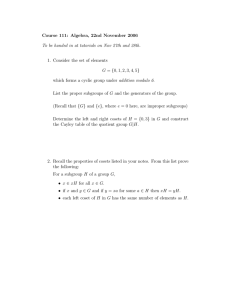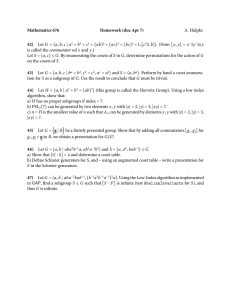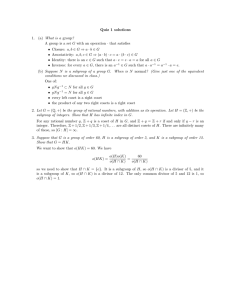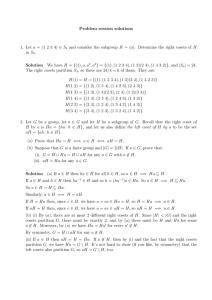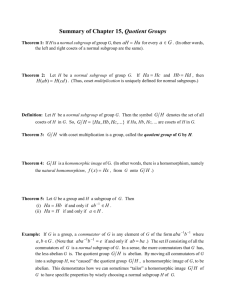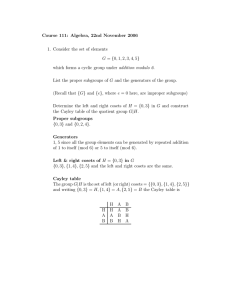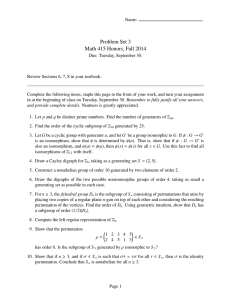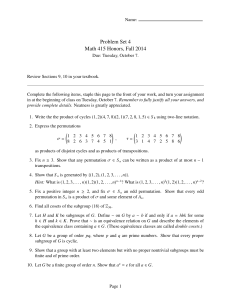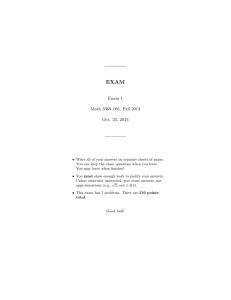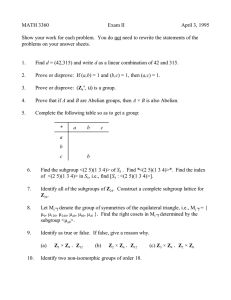Applied Algebra
advertisement
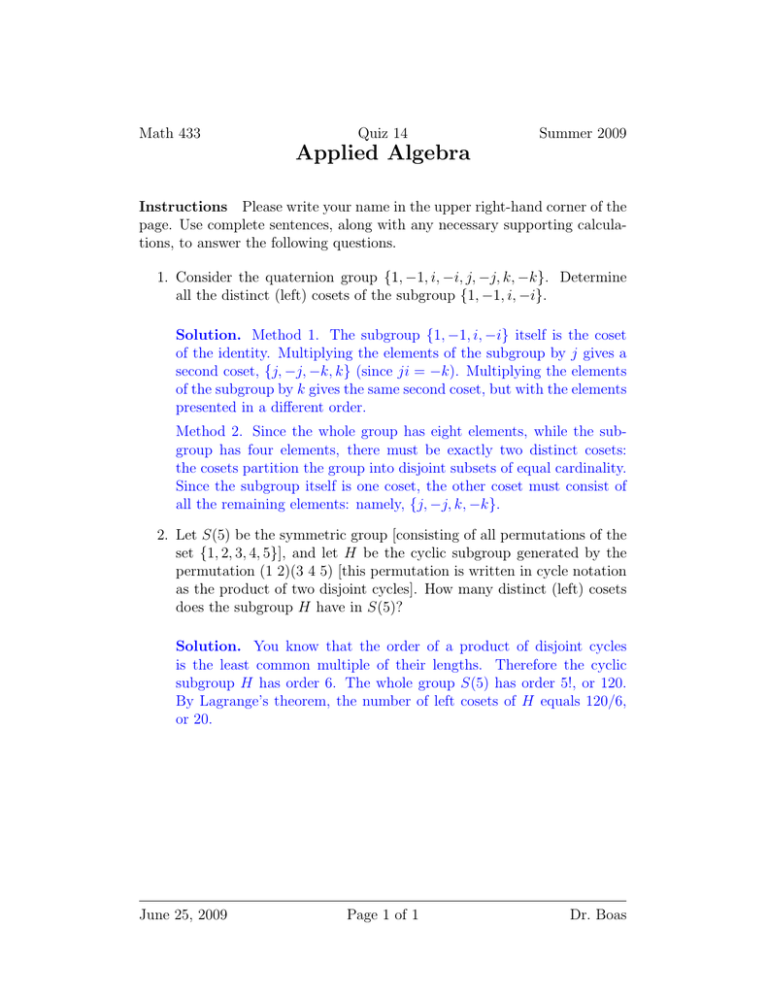
Math 433
Quiz 14
Summer 2009
Applied Algebra
Instructions Please write your name in the upper right-hand corner of the
page. Use complete sentences, along with any necessary supporting calculations, to answer the following questions.
1. Consider the quaternion group {1, −1, i, −i, j, −j, k, −k}. Determine
all the distinct (left) cosets of the subgroup {1, −1, i, −i}.
Solution. Method 1. The subgroup {1, −1, i, −i} itself is the coset
of the identity. Multiplying the elements of the subgroup by j gives a
second coset, {j, −j, −k, k} (since ji = −k). Multiplying the elements
of the subgroup by k gives the same second coset, but with the elements
presented in a different order.
Method 2. Since the whole group has eight elements, while the subgroup has four elements, there must be exactly two distinct cosets:
the cosets partition the group into disjoint subsets of equal cardinality.
Since the subgroup itself is one coset, the other coset must consist of
all the remaining elements: namely, {j, −j, k, −k}.
2. Let S(5) be the symmetric group [consisting of all permutations of the
set {1, 2, 3, 4, 5}], and let H be the cyclic subgroup generated by the
permutation (1 2)(3 4 5) [this permutation is written in cycle notation
as the product of two disjoint cycles]. How many distinct (left) cosets
does the subgroup H have in S(5)?
Solution. You know that the order of a product of disjoint cycles
is the least common multiple of their lengths. Therefore the cyclic
subgroup H has order 6. The whole group S(5) has order 5!, or 120.
By Lagrange’s theorem, the number of left cosets of H equals 120/6,
or 20.
June 25, 2009
Page 1 of 1
Dr. Boas

